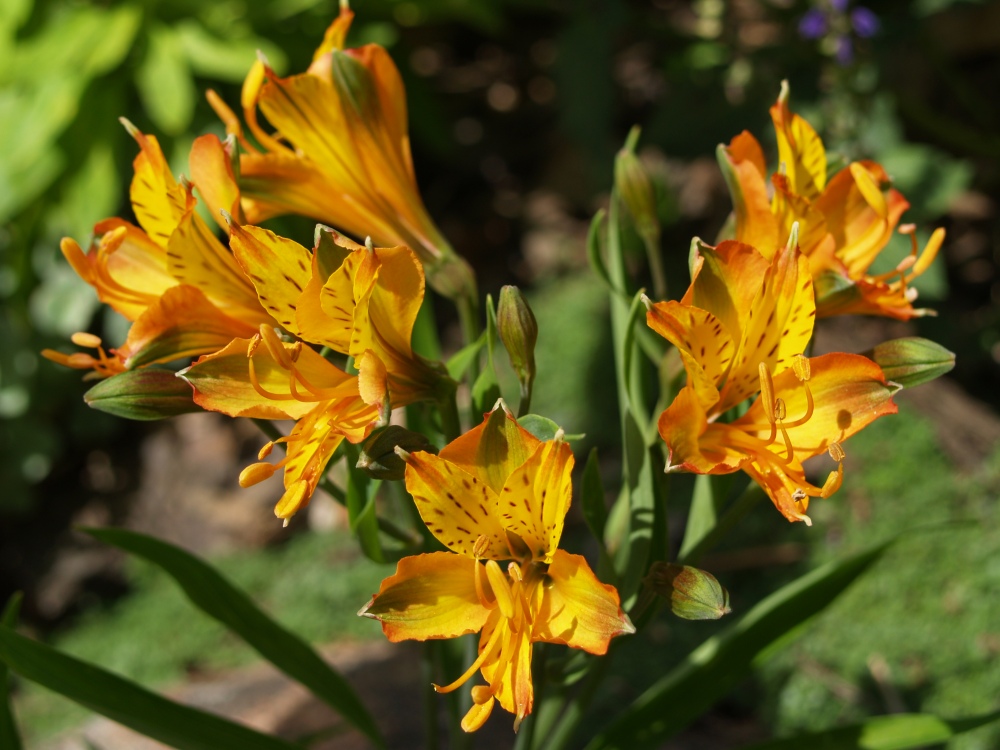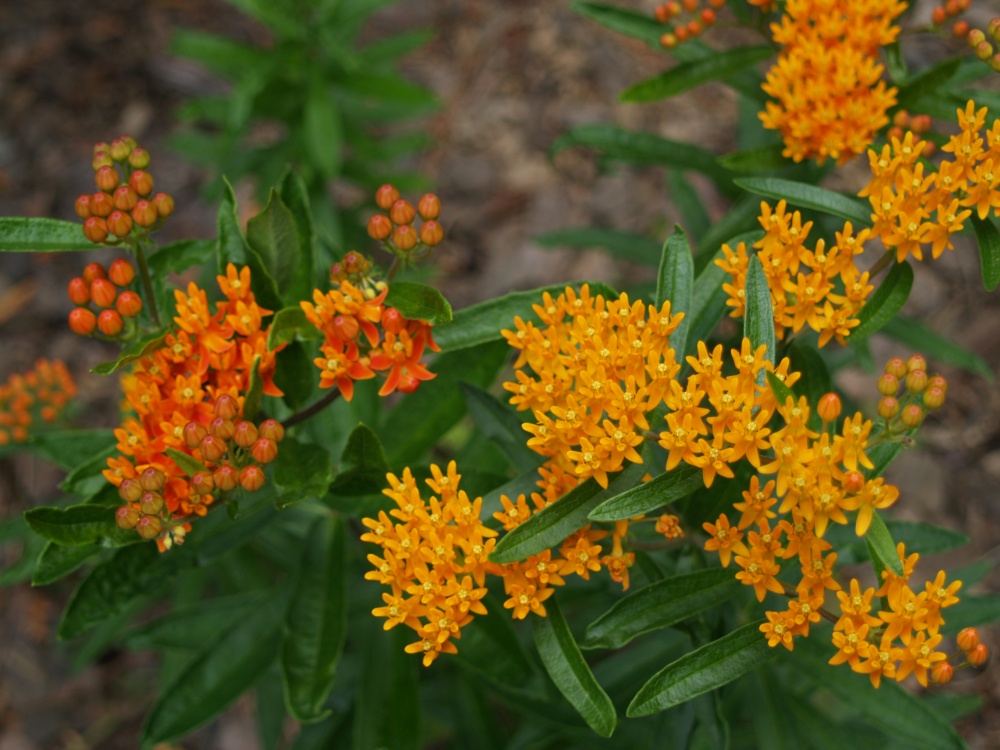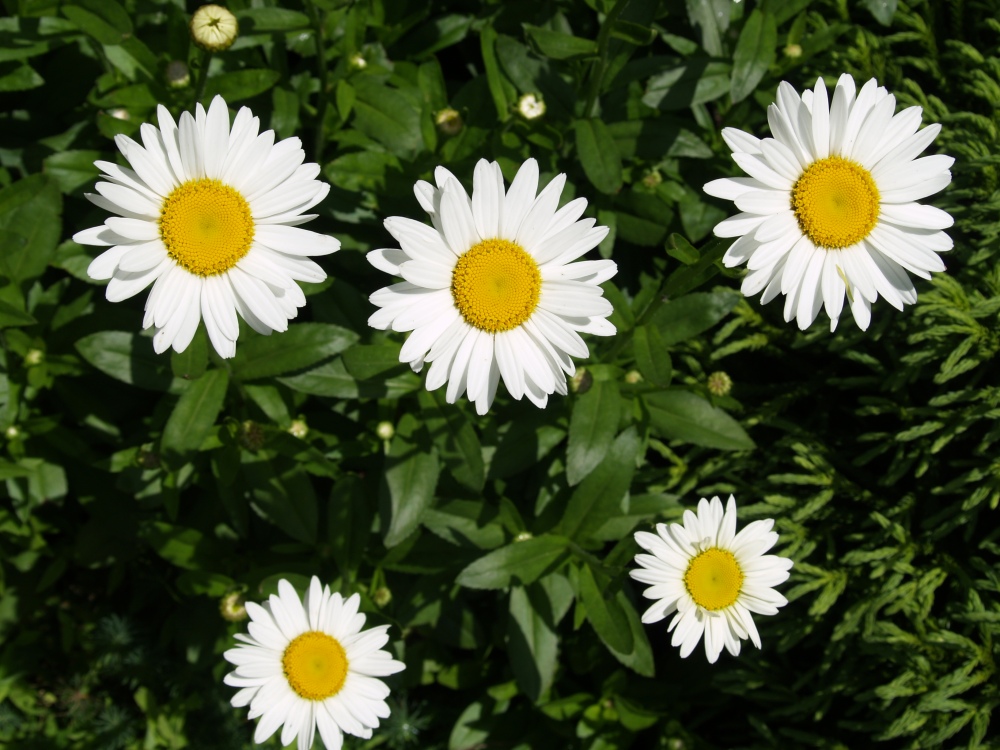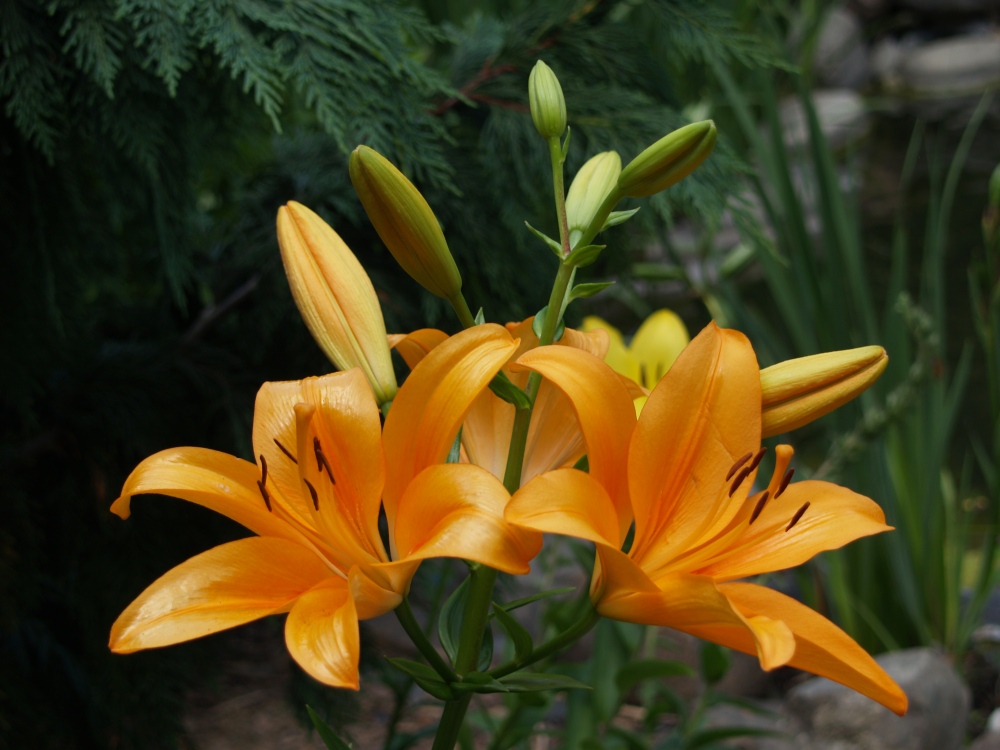The flowers of native Indian pinks (Spigelia marilandica, below) are not big and bold, but they are unmistakable and unusual so that even a casual visitor to the garden will be attracted to notice them. Blooms open over the period of three weeks beginning in early June in my garden, and I was disappointed a week ago when I discovered that they had faded. Some flowers bloom for months so that they’re taken for granted, and one flower after another becomes unremarkable, but Indian pinks and Japanese iris (Iris ensata) flower magnificently for a short period, and the gardener visits as frequently as possible to enjoy them while he can.
The Japanese irises in and around the large koi pond have faded, with the exception of ‘Lion King’ (Iris ensata ‘Lion King’, below) that only begins to bloom when the others are past. Even when ‘Lion King’ is past flowering the upright foliage of irises planted in gravel between submerged boulders gives the look of thick blades of cattails, which naturalizes the outside edge of the pond. Planted in shallow water, the iris foliage doesn’t fade until late autumn.
I noticed yesterday that deer have chewed most of the flowering tips of the Peruvian lily (Alstroemeria ‘Tangerine Tango’, below), but a few tips are safely out of chewing range for me to enjoy. I’ve planted several of the cold hardy varieties, and though I’m warned that they might be a bit aggressive, they’ve had some difficulty getting established until now. The three or four varieties were planted from tiny pots purchased through mail order, and while these nurseries have their place in supplying plants that aren’t commonly available, I often have trouble getting them established. The ideal situation is to immediately plant into a transplant bed where their growth can be monitored for the first year, and then move them into the garden once a larger root system has developed. I’ve considered this for twenty years, but haven’t gotten around to it, and probably never will, so I have to consider just how desperate I am for a plant before I order it through the mail.
But, back to the Peruvian lily. The flowers of the cold hardy types are not quite as well formed as the less hardy ones whose flowers are often used in cut flower arrangements, but they’re close enough. Now that at least one plant has begun to grow vigorously, I’ll see for myself if these are aggressive bullies, or not. Where it’s planted it can hardly bother a wide spreading Oakleaf hydrangea on one side and dwarf ‘Shaina’ Japanese maple on the other, and I’ll be happy if ‘Tangerine Tango’ grows enough to smother the couple skimpy ‘May Night’ salvias in the same open space.
A few seedlings of the native Butterfly weed (Asclepias tuberosa, above) have been tranplanted onto the dry slope on the lower side of the koi pond. Here, butterfly weed grows more dependably than in the damp area where the seedlings were harvested, but a bit slower without regular moisture. Oddly, though there are a variety of butterflies in the garden, I rarely see them visiting the butterfly weed. Perhaps they shy away because of the proximity to the pond and the abundance of dragonflies darting about.
The Shasta daisy ‘Becky’ (Leucanthemum x superbum ‘Becky’, above) continues to spread into any uncovered ground on the upper side of the pond, and by chance it is the exact height to work in harmony with its neighbors. Asiatic lilies (below) stand just above the daisies’ blooms, and these are hemmed in by larger shrubs and evergreens. The mass of daisies and lilies has made it impossible to access the pond’s edge from this side, but the daisies are delightful for a month (or longer), and stepping around them is not too great a sacrifice.
Alstroemeria Tangerine Tango is stunning, isn’t it? I don’t know why more gardeners don’t plant it!
I have a question relating to a shrub identification and since you are quite knowledgeable in that area I hope you can help? One of the Australian blogs I read has a few pics of a mystery plant. Could you take a look and let me know what you think it might be? Here’s the post with two pictures, although you may need to copy and paste if it doesn’t show up as a clickable hyperlink:
http://skybaxheadquarters.blogspot.com/2013/06/what-shrub-is-that.html
Thank you, Dave…and have a great 4th!
I’ve struck out. I’m afraid there are far too many plants on this planet for me to know any more than a tiny fraction.